Temperature management: a guide to the latest products
The National Neonatal Audit Programme (NNAP) standard is that at least 90% of babies born at less than 32 weeks’ gestation are admitted to a neonatal unit with a temperature within the recommended range of 36.5-37.5°C (normothermia). However, according to the latest NNAP report,1 in 2020 the national rate of compliance was just 71%. Maintaining a thermoneutral environment is a fundamental aspect of neonatal care, yet management of body temperature in newborn infants immediately after delivery is often challenging. Various methods to maintain normothermia and prevent heat loss are used, including drying the infant immediately after birth, wrapping the infant in pre-warmed dry blankets, the use of skin-to-skin contact between mother and baby, plastic heat loss bags, suits or wraps, hats, warm humidified gases, transwarmer or exothermic mattresses, and radiant heat sources. As part of our focus on temperature management in this issue of Infant, we present two articles describing quality improvement initiatives for optimising temperature around the time of delivery,2,3 along with this round-up of recent innovations in medical equipment.
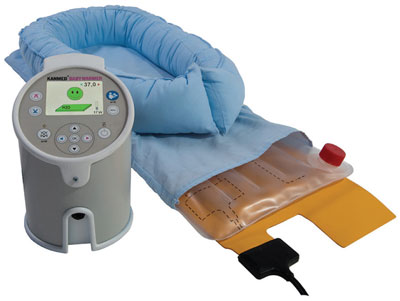
The Kanmed BabyWarmer.
Baby warming systems: preventing hypothermia from the delivery room to the neonatal unit
The Kanmed BabyWarmer is designed to help babies >1kg to maintain their core temperature and achieve normothermia outside of an incubator by gently transferring warmth from the mattress to the baby. The BabyWarmer can be used with the Kanmed BabyBed to create the Kanmed Baby Warming System, an open ergonomic system that gives easy access to the baby for staff and parents. It is available from Central Medical Supplies.
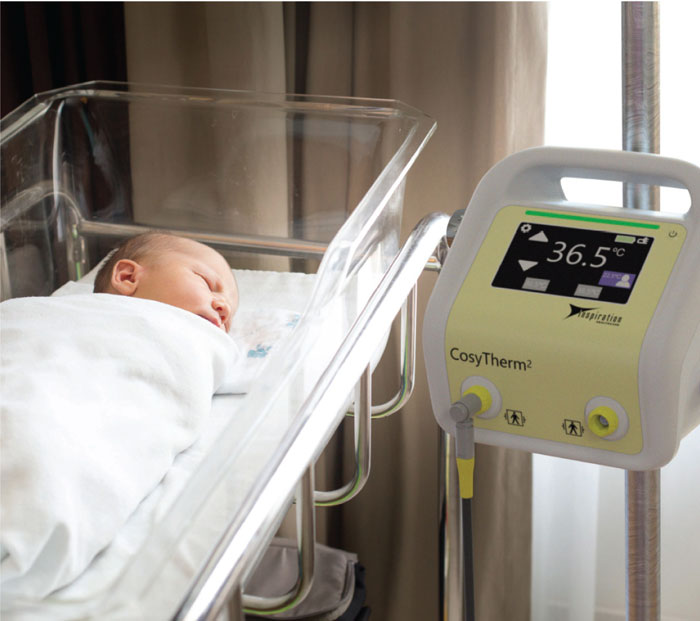
The CosyTherm2 patient warming system.
Inspiration Healthcare has introduced the lightweight and compact CosyTherm2 controller to its existing patient warming system. It is specifically designed for maintaining normothermia in neonatal applications (eg delivery suites, maternity wards and neonatal units). The technology prevents inadvertent hypothermia and also fits with the LifeStart neonatal bedside resuscitation unit, as part of introducing thermal support at the earliest opportunity.
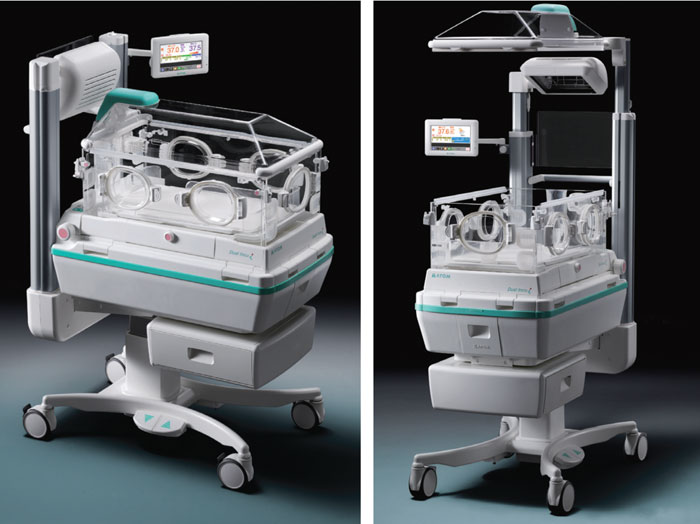
The Dual Incu I shown in incubator mode (left) and warmer mode.
The Dual Incu I by Atom is a dual-mode incubator that can perform in a wide range of hospital settings through its incubator and infant warmer modes. It offers ‘closed care’ to support daily care giving and ‘open care’ in which the Dual Incu I performs as an infant warmer to permit enhanced medical treatment. It also functions as a transport incubator, enabling continuous care from the delivery room to the neonatal unit. The Dual Incu I is available from Walters Medical Ltd.
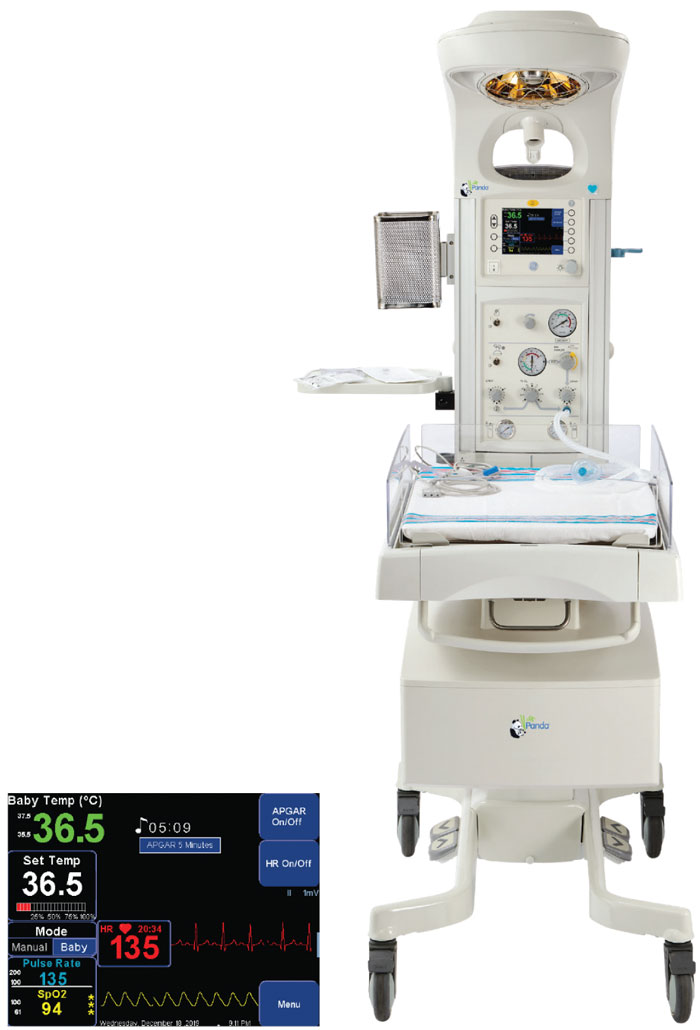
The Panda Warmer (right) and the ResusView screen.
The Panda Warmer offers a simplified integrated design. It permits easy access to the baby while providing uniform warmth across the mattress via direct heat from its innovative heater head. It also has an integrated blood oxygen saturation level (SpO2) and ECG feature for providing fast and accurate heart rate assessment to support neonatal resuscitation immediately after birth. The Panda Warmer is available from GE Healthcare.
Plastic wraps and suits used immediately after birth may provide effective heat loss reduction
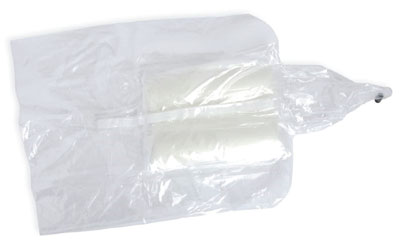
The Neohelp heat-loss prevention suit
NeoWrap occlusive wrap by Fisher & Paykel Healthcare is a medical-grade polyethylene for effectively reducing postnatal temperature decline and evaporative heat loss. It effectively stabilises temperature in very low birth weight and premature infants.
Neohelp from Vygon is a transparent, double layer, polyethylene suit that reduces heat loss through radiation, convection and evaporation. Neohelp is easy to use with direct access to the baby through the central opening. Typically, plastic wraps and suits are used for 1-2 hours after delivery until the infant can be transferred to dedicated care.
Or read this article in our
Tablet/iPad edition


